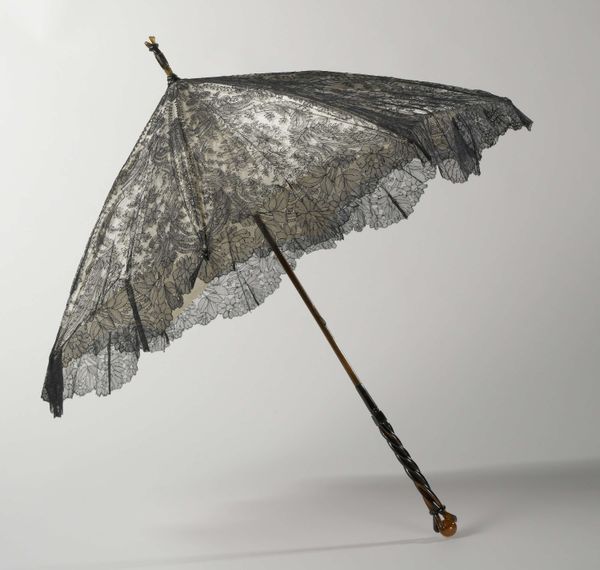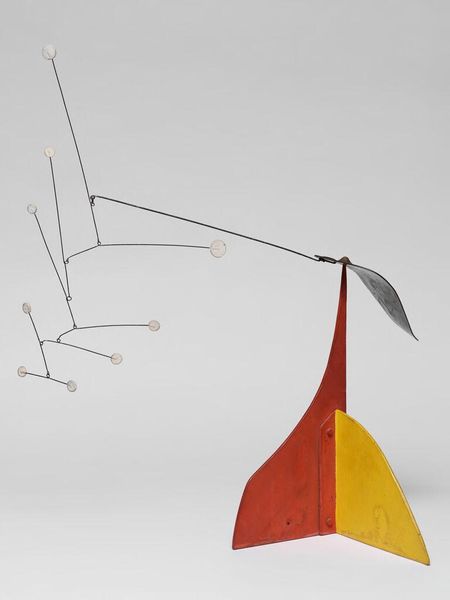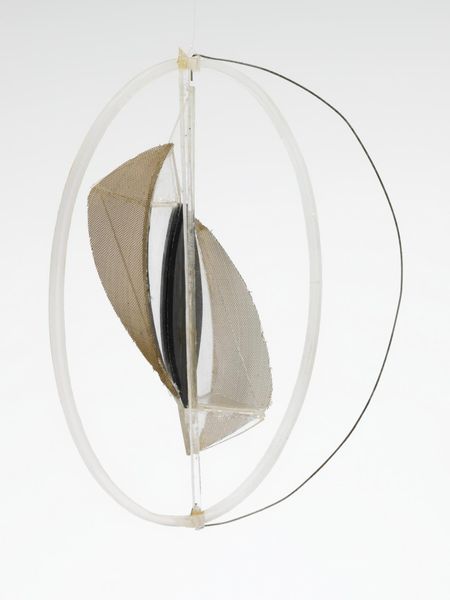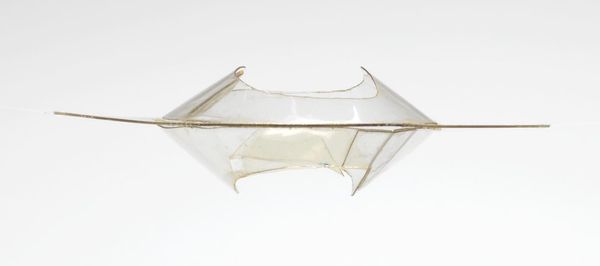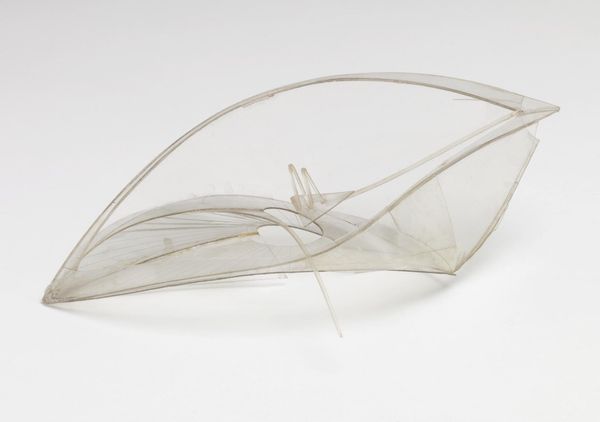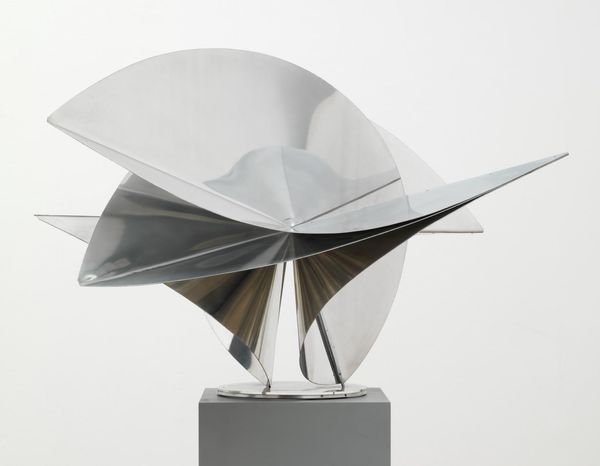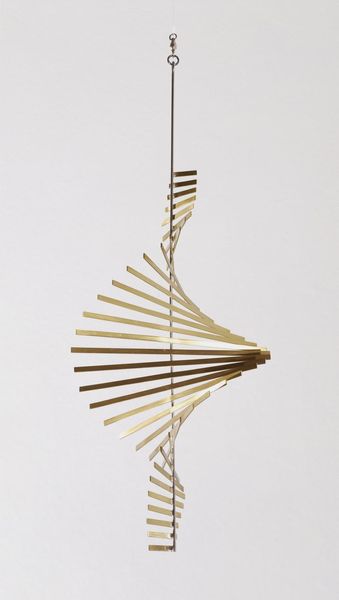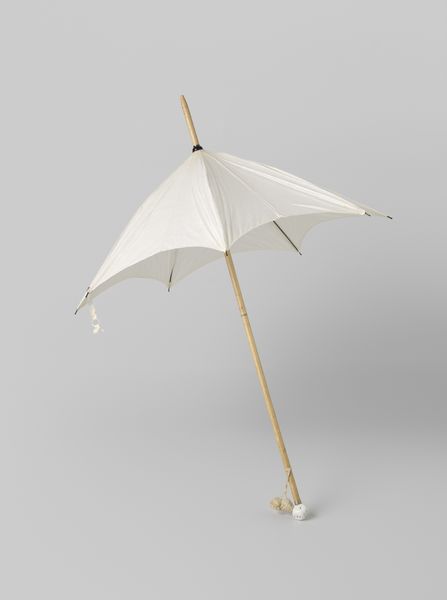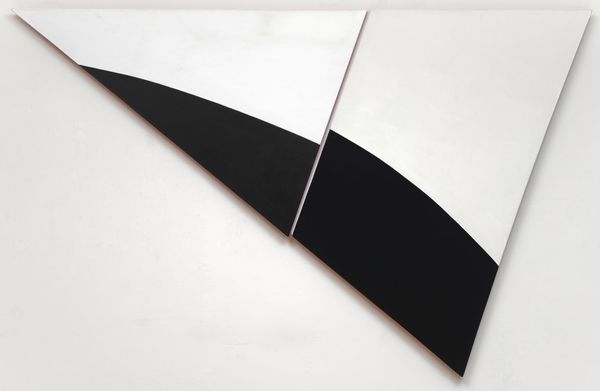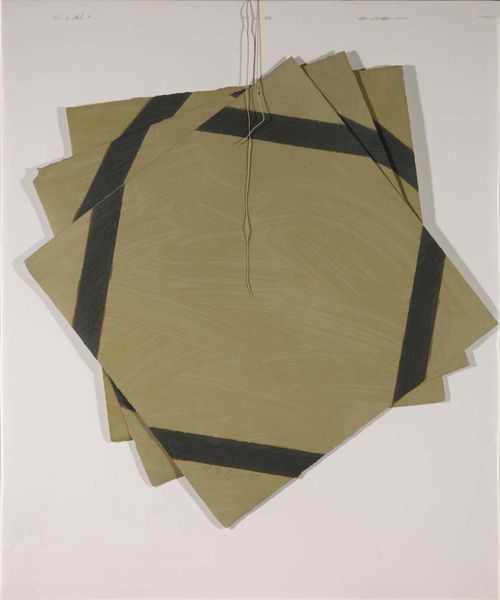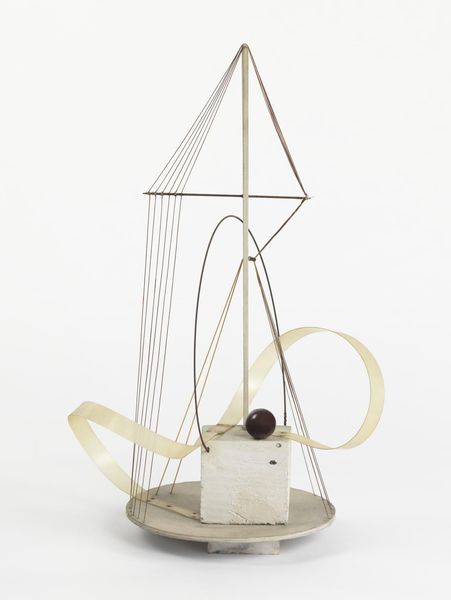
Dimensions: length 79.4 cm, length 31.6 cm, span 54 cm, diameter 8.5 cm
Copyright: Rijks Museum: Open Domain
Curator: I think we should focus on how the work is about a kind of tension between the artificial and the organic. Editor: This is an image of "Parasol" made around 1890 to 1900 using mixed media. The textile is very evocative. At first glance, I see an object meant for protection from the sun. It looks both delicate and functional. What strikes you most about this piece? Curator: Well, beyond its functionality, think about the social context. Parasols were symbols of status and respectability, tools that literally maintained the separation between women and the sun's darkening rays – signifying leisure and privilege. How does that make you consider this 'delicate' aesthetic? Editor: I see what you mean. It's not simply delicate; it’s a performance of delicacy tied to social expectations. So the use of these textiles, this construction becomes a visual code. How might that reading shift if we knew more about its intended audience or the maker? Curator: Exactly! Understanding who made it and who it was for opens up avenues to discuss the labor, the craftsmanship, the very real human effort involved in creating something that embodies such ethereal, almost unreal, qualities. What do you think about the absence of any figure? Editor: That absence becomes quite loaded. It directs all the attention to the object itself. We’re left to consider it not just as an object, but as a stand-in for the person it's meant to serve. Curator: Precisely. And what narratives does that trigger regarding identity and representation? Editor: It's fascinating to see how an everyday object can be so revealing about societal values and power structures of its time. It also highlights how even the most seemingly benign items can be laden with meaning.
Comments
rijksmuseum about 2 years ago
⋮
The end of this parasol’s stick, the ivory is carved to look like two twisted gnarled twigs. It shows the influence of realism in art (the preference for realistic depictions), which emerged in the second half of the 19th century.
Join the conversation
Join millions of artists and users on Artera today and experience the ultimate creative platform.
